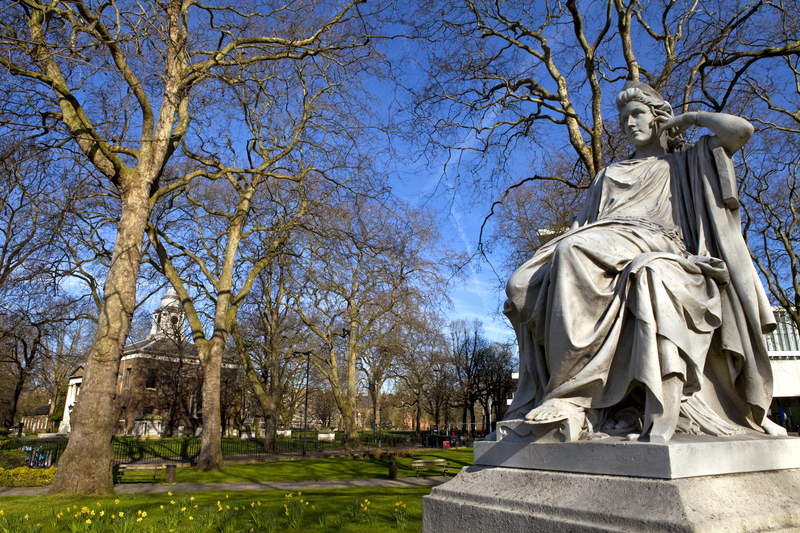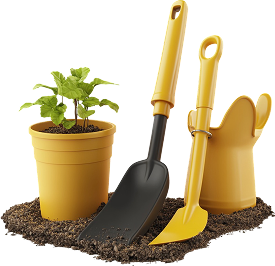Turn Small Gardens Lush with These 10 Evergreen Tree Varieties
A vibrant, green oasis doesn't have to be reserved for those with sprawling estates. By choosing the right evergreen tree varieties, even small gardens can become beautiful, secluded spaces full of life and color all year round. If you're seeking to infuse your modest outdoor area with lushness and character, discover the best compact evergreen trees that offer lasting visual interest without overwhelming your space.
Why Choose Evergreen Trees for Small Gardens?
Evergreen trees maintain their foliage throughout the year, providing structure, privacy, and color--even in the depths of winter. Their ability to withstand seasonal changes makes them ideal for small urban gardens, patios, courtyards, and balconies. The right cultivars enhance curb appeal, act as windbreaks, and can even attract wildlife to your garden. Most importantly, small evergreen trees offer a solution for year-round coverage without the need for frequent replanting or excessive maintenance.
Key Benefits of Evergreen Trees in Compact Spaces
- Year-round color and texture: Evergreens provide continuous interest even when other plants are dormant.
- Privacy screens: Compact varieties can create natural walls, shielding your garden from onlookers.
- Windbreaks and noise reduction: Their dense foliage helps break up harsh winds and reduces traffic noise.
- Low-maintenance beauty: Many small evergreens require minimal pruning.
- Diverse shapes and forms: From upright columns to round, bushy trees, they suit every garden style.

How to Select the Best Evergreen Trees for Limited Garden Space
When space is precious, careful planning is crucial. Consider the mature height and spread of each tree to avoid overcrowding. Opt for slow-growing or dwarf varieties--these are bred specifically for compact spaces and containers. Also, evaluate light, soil, and moisture needs to match your garden's conditions, ensuring healthy, thriving plants. Finally, don't forget visual impact: select trees with unique shapes, vibrant foliage, or interesting bark features to enhance your space.
10 Best Compact Evergreen Trees for Small Gardens
Let's dive into some of the top-performing small evergreen trees and why they're perfect for transforming tight plots into lush, year-round sanctuaries.
-
Dwarf Alberta Spruce (Picea glauca 'Conica')
This slow-growing, conical tree is a favorite for small garden landscapes. Typically reaching 6-8 feet tall after many years, its dense and soft green needles provide a refined look. The compact shape makes it ideal for borders, foundation planting, or as a container specimen. Place in full sun and ensure well-drained soil to prevent root diseases.
-
Japanese Holly (Ilex crenata)
With tiny, glossy leaves and a bushy habit, Japanese holly resembles boxwood but is usually tougher and pest resistant. Select dwarf cultivars like 'Sky Pencil'--which grows up to 8 feet tall but less than 2 feet wide for a striking vertical accent. It's also evergreen in mild climates, offering privacy without taking up much width.
-
Bay Laurel (Laurus nobilis)
Not only does bay laurel add Mediterranean flair, but its aromatic evergreen leaves are also useful in the kitchen. Reaching 8-12 feet in protected locations, bay responds excellently to pruning, making it suitable for topiary or keeping small for containers and mixed borders.
-
Korean Boxwood (Buxus sinica var. insularis)
Compact, reliable, and cold-tolerant, Korean boxwood grows slowly to about 2-4 feet high and wide. Its fine texture and regular growth habit are ideal for low hedges or structured shapes. It tolerates both sun and partial shade--a real gem for formal gardens and clipped features in tight spaces.
-
Olive Tree (Olea europaea)
While traditional olive trees can grow large, dwarf varieties such as 'Little Ollie' max out at 6 feet tall and wide, perfect for small sunny patios. Their silvery-green foliage adds year-round charm; olives can be pruned for shape, and their slow growth rate means less maintenance for busy gardeners.
-
Camellia (Camellia japonica and Camellia sasanqua)
For gardens needing blooms, Camellias are unmatched, offering glossy leaves and exquisite flowers from autumn through spring. Dwarf cultivars can be maintained at around 4-6 feet, suitable for containers, north-facing corners, or sheltered entrances. Their evergreen foliage remains attractive throughout the seasons.
-
Yew (Taxus baccata 'Repandens' or 'Fastigiata')
Yews are classic choices for evergreen garden trees. The upright, slender 'Fastigiata' or spreading 'Repandens' offer flexibility for narrow beds or corner highlights. They can be clipped into topiary shapes or left to grow naturally; their deep green needles resist browning throughout winter.
-
Holly (Ilex aquifolium 'Ferox Argentea' or 'Nellie R. Stevens')
Compact hollies bring festive berries and sharply cut evergreen leaves. The slow-growing 'Ferox Argentea' dazzles with white-edged foliage, while 'Nellie R. Stevens' stays dense and upright, making it a reliable privacy screen. Plant a male and female nearby to ensure berries if desired.
-
Portuguese Laurel (Prunus lusitanica 'Myrtifolia')
Valued for its small, glossy leaves and reddish stems, Portuguese laurel stays manageable in small gardens, growing around 6-8 feet tall as a shrub or small tree. Prune to size or let it form a dense, upright focal point. It thrives in both sun and partial shade, tolerating urban conditions well.
-
Dwarf Magnolia (Magnolia grandiflora 'Little Gem')
This evergreen magnolia brings large, fragrant white flowers to small spaces. The 'Little Gem' variety matures at 12-20 feet, but it can be trimmed regularly for smaller spots. Thick, lustrous oval leaves provide year-round structure and contrast beautifully with its blooms.
Additional Evergreen Trees for Tiny Spaces or Containers
Living in an apartment with a balcony? Many evergreen tree species are perfect for pots or raised planters. Consider options like:
- Dwarf Hinoki Cypress (Chamaecyparis obtusa 'Nana Gracilis'): Compact, slow-growing, and beautifully textured.
- Juniper 'Blue Star' (Juniperus squamata 'Blue Star'): Low, mounding form and striking blue needles.
- Japanese Maple 'Shishigashira': Technically a deciduous shrub but holds leaves late and has sculpted, evergreen-like shape.
Caring for Evergreen Trees in Small Gardens
To keep your evergreen trees looking lush and healthy, follow these essential care tips:
- Water regularly--especially during their first few years. Established evergreens tend to be drought tolerant but may suffer in extended dry spells.
- Use mulch around the roots to maintain moisture and protect from temperature extremes.
- Prune lightly to shape after the risk of frost has passed. Avoid cutting into old wood in spring-flowering species like camellias.
- Feed with slow-release fertilizer yearly, particularly if grown in containers.
Creative Design Ideas for Lush Small Gardens
Transforming your petite green space into a lush retreat is not just about planting--it's about clever arrangement and design. Here are ideas to maximize the impact of compact evergreen trees:
- Use vertical space: Columnar or upright trees such as 'Sky Pencil' holly or yew create structure and make the garden feel more substantial.
- Mix textures: Pair fine-needled evergreens like spruce or juniper with broadleaf types for contrast and interest.
- Layer heights: Place tallest trees at the rear or as focal points, with low-growing evergreens as borders or fillers.
- Consider containers: Dwarf olive or bay trees make stunning potted features by doors or on patios.
- Incorporate seasonal interest: Hollies for winter berries, camellias for winter-to-spring flowers, and variegated evergreens for year-round variegation.

Frequently Asked Questions About Evergreens in Small Gardens
What is the best time of year to plant evergreen trees?
The ideal planting season for evergreens is early autumn or late spring. This gives trees time to establish roots before the stress of hot summers or cold winters. Container-grown evergreens typically transplant well outside of extreme temperature periods.
How do I choose the right evergreen for pots?
Look for dwarf or slow-growing species with compact root balls. Ensure your pot has good drainage, and use light, well-draining soil. Feed and water more frequently than in-ground plants, and select trees suited to your climate (e.g., bay, boxwood, or dwarf conifers).
Can I prune evergreen trees to keep them smaller?
Yes! Most small evergreen varieties tolerate and even benefit from light pruning. Early spring is best for shaping before vigorous new growth starts. Avoid heavy pruning of spring bloomers after buds form.
Are evergreen trees good for wildlife?
Absolutely. Dense foliage offers excellent shelter for birds and beneficial insects. Hollies and yews also produce berries that attract songbirds, supporting your local ecosystem.
Conclusion: Make Your Small Garden an Evergreen Haven
It's entirely possible to achieve dense, year-round color and structure--even in the smallest of garden spaces. By carefully selecting from these top 10 evergreen trees for small gardens, your landscape will benefit from easy-care, privacy-enhancing, and always attractive greenery. Don't hesitate to combine a variety of shapes, leaf textures, and flower or berry-bearing types for a truly captivating and lush miniature haven.
Ready to transform your compact space? Plant one (or more) of these evergreens and watch your small garden become a lush retreat for seasons to come!
